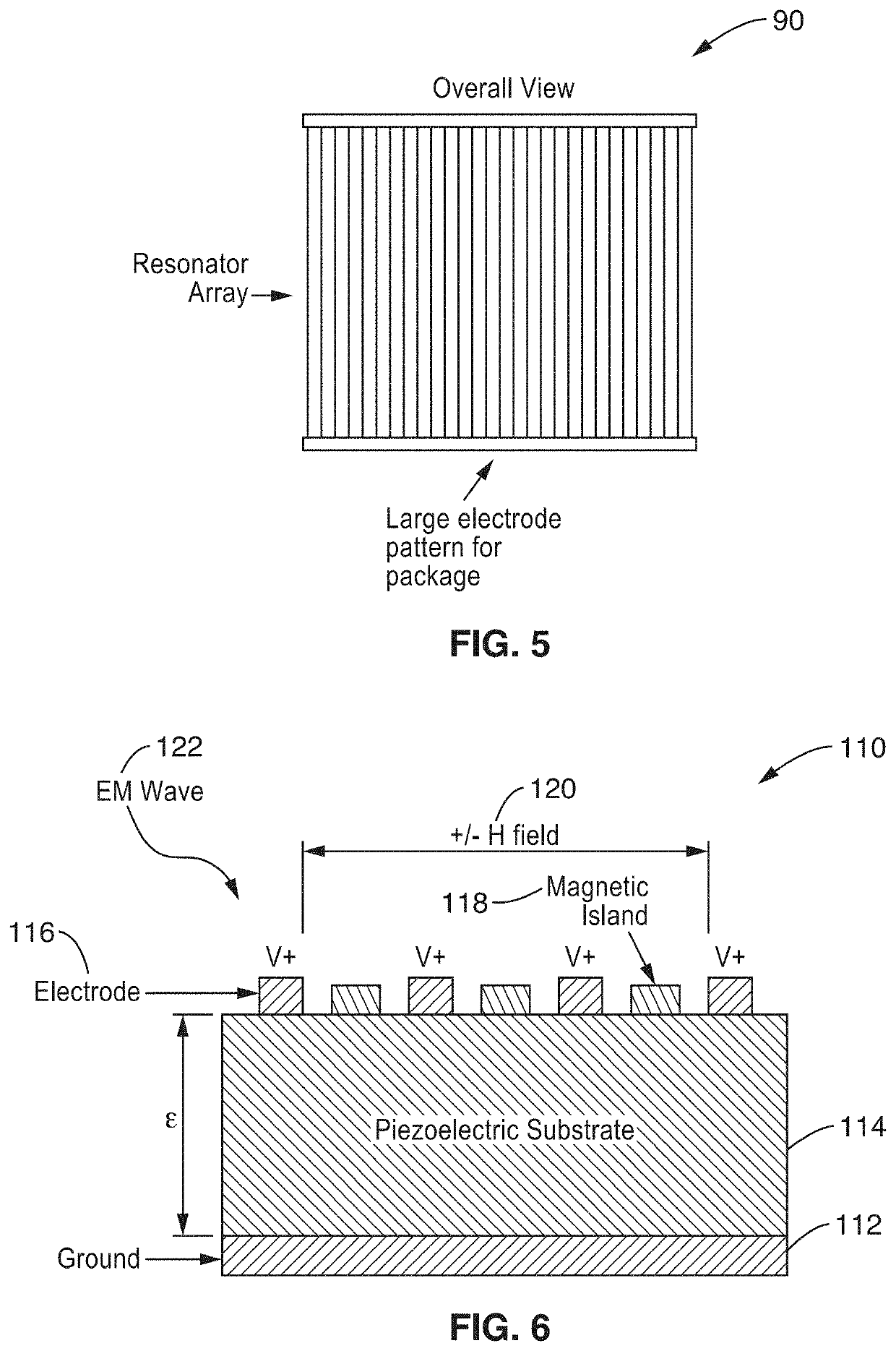Extremely electrically small antennas based on multiferroic materials
a multiferroic material and antenna technology, applied in the field of electricly small antennas, can solve the problems of antennas with significantly higher ohmic losses, low radiating capability of conventional antennas, and multiferroic antenna designs
- Summary
- Abstract
- Description
- Claims
- Application Information
AI Technical Summary
Benefits of technology
Problems solved by technology
Method used
Image
Examples
Embodiment Construction
1. Introduction
[0027]An antenna is described, by way of example and not limitation, which relies on magnetoelastic and / or magnetostrictive resonators to transmit electromagnetic waves through dynamic strain, or to receive electromagnetic waves when such a dynamic strain is induced on a piezoelectric substrate. The magnetoelastic and / or magnetostrictive resonators can only transfer certain frequency EM waves into mechanical vibrations related to their natural frequency of resonance. The size, shape, and distance relationship between the resonator and its receiver / detector electrode determine the resonant parameters, which are conditions for peak voltage detection. A feature of this antenna is that the resonators are in the same plane with the electrode detectors, but in a different plane with the ground electrode. The electrical field is applied out-of-plane and the strength of such a field is detected through measuring the induced voltage. In this way, the energy loss will be reduce...
PUM
 Login to View More
Login to View More Abstract
Description
Claims
Application Information
 Login to View More
Login to View More - R&D
- Intellectual Property
- Life Sciences
- Materials
- Tech Scout
- Unparalleled Data Quality
- Higher Quality Content
- 60% Fewer Hallucinations
Browse by: Latest US Patents, China's latest patents, Technical Efficacy Thesaurus, Application Domain, Technology Topic, Popular Technical Reports.
© 2025 PatSnap. All rights reserved.Legal|Privacy policy|Modern Slavery Act Transparency Statement|Sitemap|About US| Contact US: help@patsnap.com



